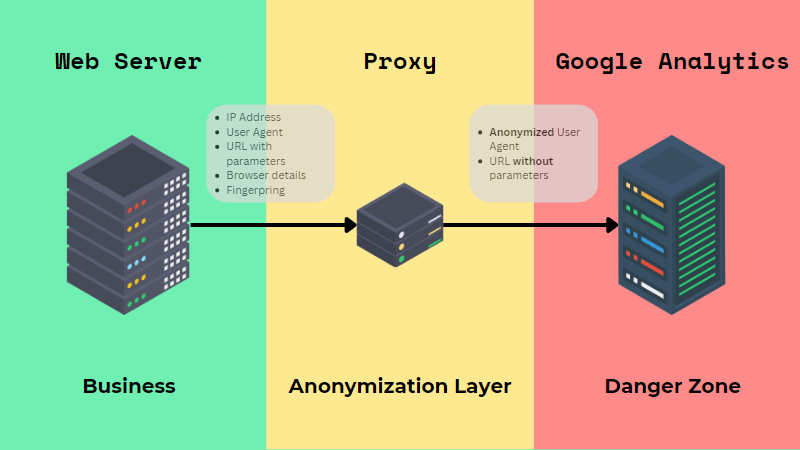Ultimate FAQ: What Data Does Google Analytics Prohibit Collecting?
Wiki Article
Mastering the Art of Overcoming Data Collection Limitations in Google Analytics for Better Decision-Making
In the world of electronic analytics, the capacity to essence significant understandings from data is critical for informed decision-making. Google Analytics stands as an effective device for companies seeking to comprehend customer actions, track conversions, and maximize their online visibility. Nonetheless, information collection limitations within this system can hinder the precision and depth of the info collected. To genuinely harness the potential of Google Analytics for tactical decision-making, mastering the art of getting over these restraints is vital. By employing innovative strategies and calculated methods, companies can elevate their data quality, unlock hidden insights, and pave the means for more informed and reliable choices.Data High Quality Analysis
Information top quality assessment involves reviewing numerous facets such as precision, completeness, uniformity, and timeliness of the data. One crucial element to consider is data accuracy, which refers to exactly how well the information shows the real values of the metrics being determined.
Efficiency of data is another important consider assessing information high quality. It entails making certain that all required data factors are collected and that there are no gaps in the information. Incomplete data can alter evaluation results and hinder the capacity to obtain an extensive view of customer behavior or site efficiency. Consistency checks are additionally vital in data quality analysis to identify any kind of disparities or anomalies within the data collection. Timeliness is equally crucial, as obsolete data might no longer be pertinent for decision-making processes. By prioritizing data quality analysis in Google Analytics, companies can enhance the dependability of their analytics reports and make more educated choices based on precise insights.
Advanced Monitoring Techniques
Using sophisticated monitoring strategies in Google Analytics can considerably boost the depth and granularity of data accumulated for more detailed evaluation and understandings. One such strategy is event tracking, which enables the monitoring of particular communications on a web site, like click switches, downloads of documents, or video clip sights. By applying occasion monitoring, businesses can gain a deeper understanding of user behavior and engagement with their online material.In addition, custom dimensions and metrics offer a method to tailor Google Analytics to specific company requirements. Custom-made measurements enable for the production of brand-new data points, such as user roles or customer sectors, while personalized metrics make it possible for the monitoring of one-of-a-kind efficiency signs, like income per individual or average order value.
In addition, the application of Google Tag Supervisor can enhance the application of tracking codes and tags throughout an internet site, making it much easier to handle and deploy innovative monitoring arrangements. By utilizing these sophisticated tracking methods, businesses can open useful insights and optimize their on-line methods for better decision-making.
Personalized Measurement Implementation
To boost the deepness of data accumulated in Google Analytics beyond advanced tracking techniques like occasion tracking, businesses can apply customized measurements for even more tailored understandings. Custom measurements allow organizations to define and accumulate certain data points that are relevant to their special goals and goals (What Data Does Google Analytics Prohibit Collecting?). By assigning custom-made dimensions to various elements on a web site, such as user interactions, demographics, or session details, services can acquire a more granular understanding of just how individuals involve with their on the internet homes
Attribution Modeling Approaches
Effective acknowledgment modeling is essential for recognizing the impact of different advertising and marketing channels on conversion paths. By utilizing the right attribution design, organizations can accurately associate conversions to the ideal touchpoints along the customer journey. One typical acknowledgment version is the Last Interaction design, which provides credit rating for a conversion to the last touchpoint an individual engaged with prior to converting. While this model is simple and basic to apply, it frequently oversimplifies the consumer journey, neglecting the influence of various other touchpoints that added to the conversion.
Information Tasting Evasion
When dealing with large quantities of data in Google Analytics, getting over information tasting is necessary to make sure accurate understandings are derived for educated decision-making. Information tasting occurs when Google Analytics approximates patterns in information instead than evaluating the total dataset, possibly leading to skewed results. By taking these proactive actions to decrease data sampling, companies can extract more precise insights from Google Analytics, leading to much better decision-making and boosted total efficiency.Final Thought
Finally, grasping the art of overcoming information collection limitations in Google Analytics is important for making informed choices. By performing a comprehensive data quality analysis, applying innovative tracking strategies, making use of customized dimensions, using attribution modeling methods, use this link and staying clear of data tasting, businesses can make certain that they have accurate and reliable data to base their decisions on. This will ultimately result in more efficient techniques and far better outcomes for the company.Report this wiki page